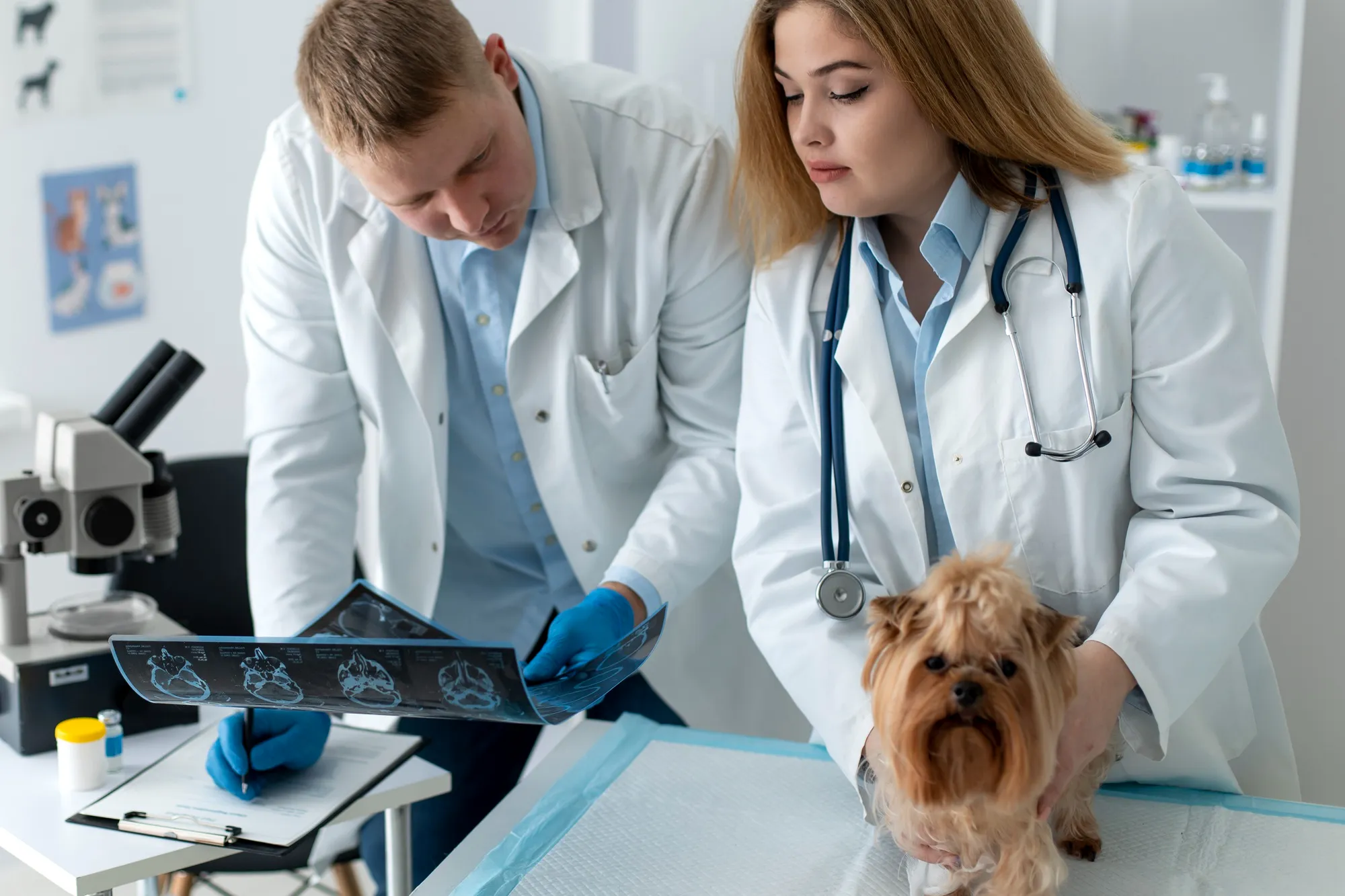A groundbreaking study conducted at the Freie Universität’s Institute of Veterinary Pathology has shed new light on the process of aging and senescence in the testes of man’s best friend, the domestic dog. The research, which focuses on the accumulation of senescent cells within the testicular microenvironment and its potential link to tumor development, offers invaluable insights into the biological clock that dictates fertility and cellular integrity in canines.
DOI: https://doi.org/10.1177/0300985819843683
The study, published in Veterinary Pathology, compared the testicular tissue of 15 young dogs under 18 months old with that of 15 older dogs between 7 and 15 years of age. Researchers, including lead author Sophie E. Merz and her colleagues Robert Klopfleisch, Angele Breithaupt, and Achim D. Gruber, carefully analyzed the expression of gamma H2AX and p21 – markers that are commonly associated with cellular senescence.
The Discovery of Aging Testicular Cells
Results were surprising, as they revealed a statistically significant age-dependent increase in the percentage of p21-expressing cells, especially in testicular fibroblasts (a fourfold increase) and Leydig cells (an eightfold increase). However, these p21-expressing senescent cells were still comparatively rare events within the testicular environment. Contrarily, gamma H2AX-positive cells, another marker of senescence, did not exhibit a similar increase with age.
Morphological Changes and Their Implications
In addition to molecular findings, the study also documented morphological changes in the aging canine testes. There was a noticeable increase in the mean number of Leydig cells per intertubular triangle, while the spermatogenesis score decreased with age, indicating a decline in the ability to produce sperm. Interestingly, no significant alterations were noted for parameters such as interstitial collagen content, mean tubular diameter, and epithelial area.
Senescence and Testicular Tumors: An Unexpected Disconnect
One of the most striking outcomes of the research was the absence of evidence to correlate the age-associated accumulation of senescent cells in the testes with the development of testicular tumors. This finding contradicts previous in vitro data and highlights the complexities in comprehending the role of the microenvironment in the process of cellular senescence.
The Path Forward
The study by Merz et al. sets the stage for future research into geriatric conditions affecting canine reproductive health and underscores the need for further exploration into the paradox of aging cells within a living organism. Understanding the intricate dance between senescence and tumor proliferation remains a critical challenge for scientists striving to decipher the enigma of the aging process.
What This Means for Canine Health
This research is pivotal for both veterinary medicine and comparative pathology. As dogs are recognized for mirroring the human conditions of aging and disease, insights gained from this study could have broader implications for understanding senescence-related disorders in humans. It underscores the value of dogs as a model organism and aids in the advancement of anti-aging therapies that can benefit both human and veterinary patients.
Keywords
1. Canine testicular aging
2. Cellular senescence in dogs
3. Veterinary pathology research
4. p21 and gamma H2AX in aging
5. Age-related changes in testes
References
1. Merz, S. E., Klopfleisch, R., Breithaupt, A., & Gruber, A. D. (2019). Aging and Senescence in Canine Testes. Veterinary Pathology, 56(5), 715-724. doi: (https://doi.org/10.1177/0300985819843683)
2. Tchkonia, T., Zhu, Y., van Deursen, J., Campisi, J., & Kirkland, J. L. (2013). Cellular senescence and the senescent secretory phenotype: therapeutic opportunities. The Journal of Clinical Investigation, 123(3), 966–972. doi: (https://doi.org/10.1172/JCI64098)
3. Childs, B. G., Durik, M., Baker, D. J., & van Deursen, J. M. (2015). Cellular senescence in aging and age-related disease: from mechanisms to therapy. Nature Medicine, 21(12), 1424-1435. doi: (https://doi.org/10.1038/nm.4000)
4. Hayflick, L. (1965). The Limited in Vitro Lifetime of Human Diploid Cell Strains. Experimental Cell Research, 37, 614-636. doi: (https://doi.org/10.1016/0014-4827(65)90211-9)
5. Gosselin, K., Abbadie, C., & Martien, S. (2017). Extracellular matrix contribution to skin aging. Matrix Biology Plus, 1, 100001. doi: (https://doi.org/10.1016/j.mbplus.2017.08.001)
By revealing crucial details about the aging process in canine testes, this research paves the way for the development of new strategies to diagnose, treat, and perhaps even prevent age-related reproductive and systemic diseases in dogs, providing owners and veterinarians alike with the knowledge to better care for our aging furry friends.
